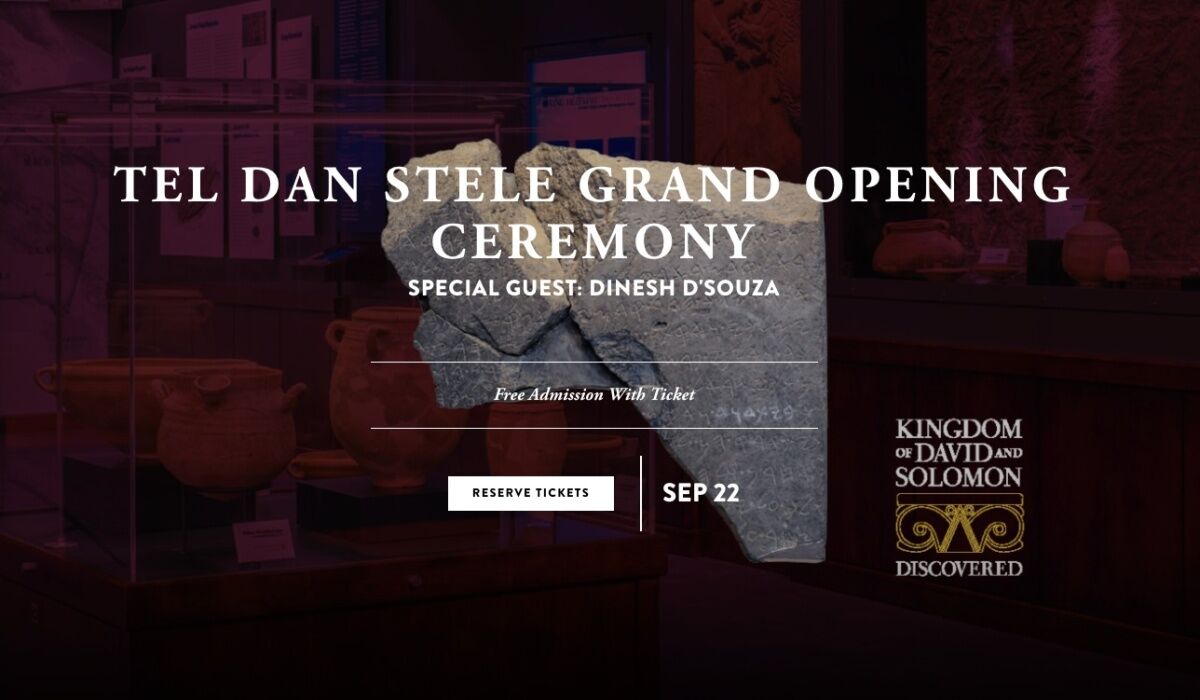King David Comes to America
King David has the longest biography of any biblical personality. He is a pivotal figure in the Hebrew Bible and Jewish history. And yet in the world of academia and archaeology, he is one of the most controversial figures.
In the 1980s, biblical minimalists began working to relegate King David to a myth, questioning his existence and the historical reality of what the Bible records about him. In his 1992 book In Search of ‘Ancient Israel,’ Philip Davies wrote: “Whoever is living in the Palestinian highlands around 1000 b.c.e. [King David’s time period], they do not think, look or act like the people the biblical writers have put there. They are literary creations.” This had become the mainstream belief among academics at the time.
Yet as is so often the case, an ever growing body of archaeological and historical evidence is proving the Bible right and these scholars wrong.
Virtually all of the evidence about Israel’s most famous king is presented in our archaeological exhibit, which is now open in Edmond, Oklahoma: “Kingdom of David and Solomon Discovered.”

If you can’t visit the exhibit in person, be sure to request our special exhibit issue of Let the Stones Speak, which explores the evidence for David and Solomon’s kingdom in detail. This issue is now available in Hebrew. If you live in Israel and would like a Hebrew version, write us at requestIL@ArmstrongInstitute.org. You can also take a virtual tour of the exhibit by visiting exhibit-tour.ArmstrongInstitute.org.

In 1993, Israeli archaeologist Avraham Biran discovered a large fragment of a basalt stele (inscription) at the Tel Dan excavation in northern Israel. Subsequent excavations the following year revealed two more fragments. When archaeologists put the pieces together, they revealed an extraordinary message. It stunned the world and sent an earthquake through the archaeological community.
The inscription was made by King Hazael of Syria in the mid-ninth century b.c.e. Hazael had recently led his Aramean forces into battle against the allied forces of Jehoram, king of Israel, and Ahaziah, king of Judah (2 Kings 9). Hazael’s campaign was successful, and he boasted about his military victory on a basalt “victory stele” that he set up as a monument in the northern Israelite city of Dan.
On the ninth line of the stele, this is recorded: “[I killed Jeho]ram son of [Ahab] king of Israel, and I killed [Ahaz]yahu son of [Joram kin]g of the house of David. …”
This expression, “house of David,” is used 26 times in the Bible.
This discovery provided the first conclusive archaeological evidence pointing to King David’s existence as a true historical figure. Beyond that, it also proved that he was the head of a royal dynasty—just as the Bible describes. It also showed that his dynasty was so well known that a Syrian king—living more than 150 years after David—still referred to that line of kings as belonging to David’s dynasty.
This is, I believe, one of the most important archaeological discoveries ever to be found! It is uniquely special because of how powerfully it complements the biblical text and what it reveals about the legacy of King David.
The Tel Dan Stele belongs to the State of Israel and is one of its most important and celebrated artifacts. Under the care of Israel Museum, the stele is one of the museum’s signature pieces. “The Louvre in Paris has the Mona Lisa, by Leonardo da Vinci—we have the Tel Dan Stele, by King Hazael,” stated Pirchia Eyal, curator at Israel Museum.
Last December, as we were creating our exhibit, we asked the Israel Antiquities Authority and Israel Museum about potentially showcasing the Tel Dan Stele in our exhibit. We knew it was an audacious request, but we felt like it belonged in an exhibit built around King David that celebrated his legacy.
The stele has been to America only once, where it was briefly on display at the Metropolitan Museum of Art in New York City. Bringing it to our exhibit would allow thousands of people to see it who otherwise would never have the opportunity.
At the time, bringing the stele to America wasn’t possible, so Israel Museum kindly loaned us a beautiful replica.
Now, I am thrilled to announce that the Tel Dan Stele is coming to America to be a part of our “Kingdom of David and Solomon Discovered” exhibit!
As I prepare this article, we are still finalizing the details. But we expect the stele to go on display in mid-to-late September and to remain on display through November 22.
After its stint in Edmond, Oklahoma, the stele will travel to New York City, where it will be on display for six weeks at the Jewish Museum.
We are incredibly grateful to Israel Museum, to the Israel Antiquities Authority and to the people of Israel for sharing this extraordinary artifact with us. This is a tremendous honor and responsibility for the Armstrong Institute of Biblical Archaeology and a highlight for us after almost 60 years of working in Jerusalem in support of Israel and biblical archaeology.
Now more than ever, the world needs the vision and hope contained within Israel’s archaeology and biblical history, and within the legacy of King David. I believe the life and accomplishments of King David, recorded in detail in the biblical text, is one of the greatest sources of education and inspiration available to man. King David is just that important!
To learn more about the exhibit and the Tel Dan Stele, and to plan your visit to Edmond, be sure to visit ArmstrongInstitute.org. If you can, I encourage you to visit Armstrong Auditorium where the “house of David” will soon be on display!